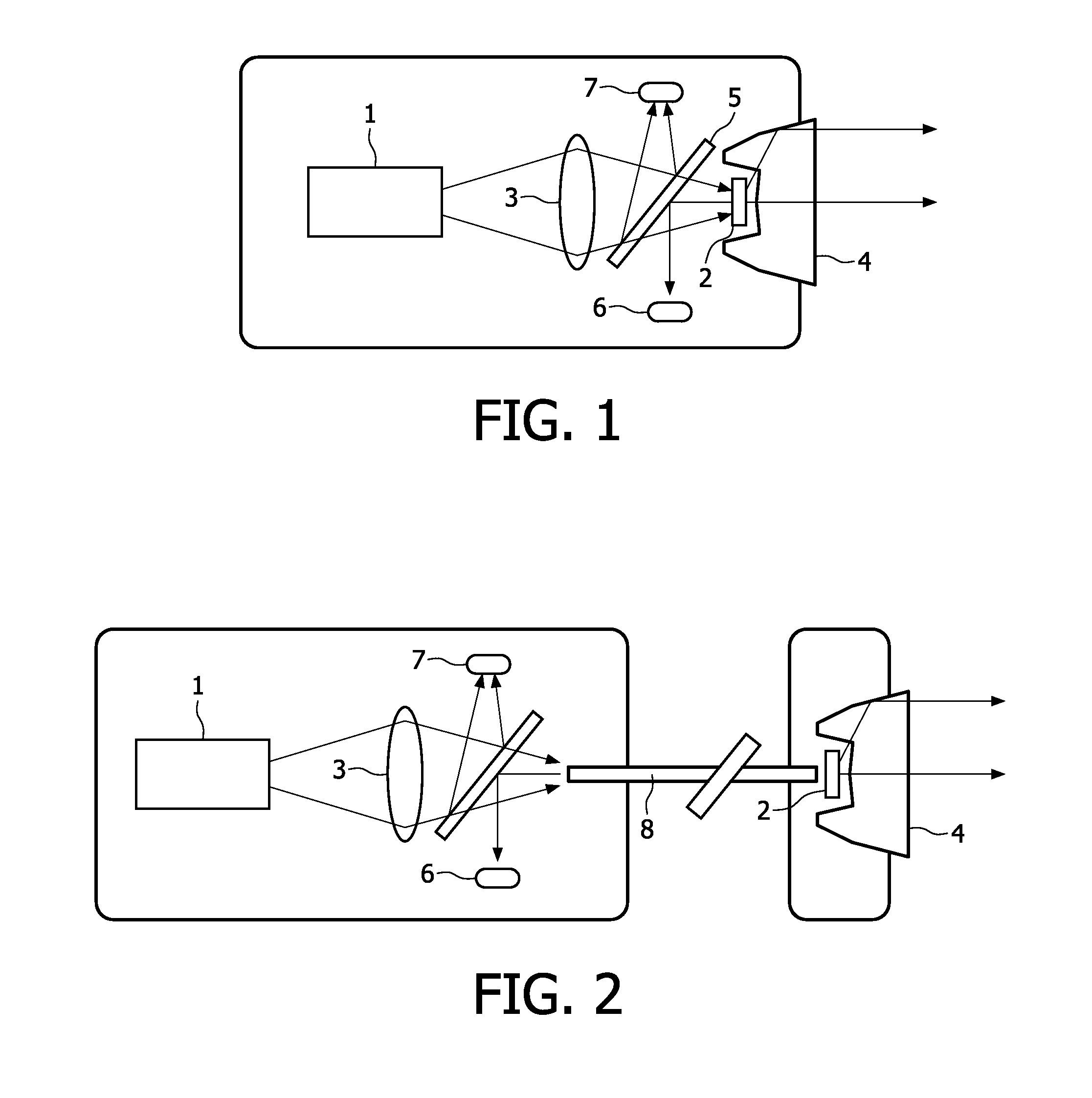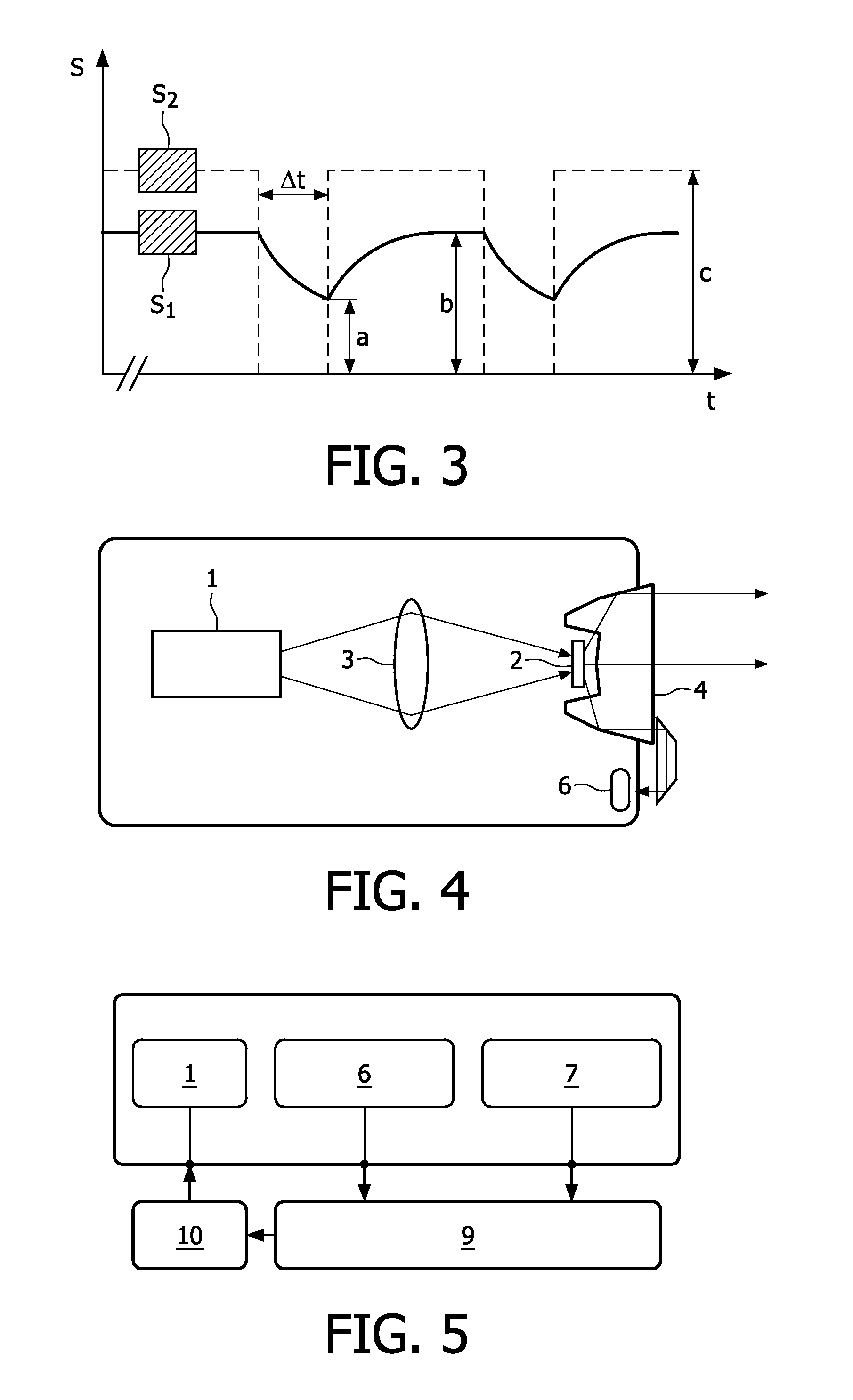Eye-safe laser-based lighting
a laser-based lighting and laser-based technology, applied in the field of laser-based light sources, can solve the problems of annoying speckles, low illumination efficiency of laser-based light, etc., and achieve the effect of reliable eye safety
- Summary
- Abstract
- Description
- Claims
- Application Information
AI Technical Summary
Benefits of technology
Problems solved by technology
Method used
Image
Examples
Embodiment Construction
[0044]A first embodiment according to the invention is schematically depicted in FIG. 1. Laser light is generated by a laser device 1, i.e. a diode laser, e.g. in an edge-emitting geometry or a vertical-cavity surface-emitting geometry (VCSEL). This laser light is directed via optics 3 to a volume of phosphorous material of a light-conversion device 2 which is in a powderous or crystalline, preferably polycrystalline, state. The laser device 1 emits blue light, preferably around 445 nm. The light-conversion device 2 converts the blue laser light into broadband yellow light. The combination of this yellow light and the remainder of the blue light results in white light. The white light generated in this way is shaped into a beam by means of collimating optics 4.
[0045]Some of the light generated by the light-conversion device 2 as well as some of the laser light is redirected towards the laser device 1. A beam splitter 5 at an angle of 45° is used to direct a fraction of this light to...
PUM
 Login to View More
Login to View More Abstract
Description
Claims
Application Information
 Login to View More
Login to View More - R&D
- Intellectual Property
- Life Sciences
- Materials
- Tech Scout
- Unparalleled Data Quality
- Higher Quality Content
- 60% Fewer Hallucinations
Browse by: Latest US Patents, China's latest patents, Technical Efficacy Thesaurus, Application Domain, Technology Topic, Popular Technical Reports.
© 2025 PatSnap. All rights reserved.Legal|Privacy policy|Modern Slavery Act Transparency Statement|Sitemap|About US| Contact US: help@patsnap.com



